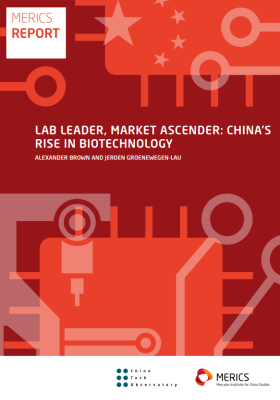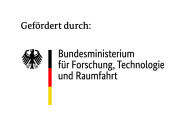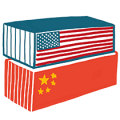

There’s been a shift in US-China tech competition – and it’s not good news for the rest of the world
Washington’s efforts to restrict AI take a knock as China’s chipmakers eye foreign markets and Beijing grows more assertive, say Antonia Hmaidi and Rebecca Arcesati.
The Trump administration recently warned companies worldwide that using Chinese tech giant Huawei’s Ascend 910 AI processors without permission would result in legal sanctions. The move tacitly acknowledged that China’s advanced semiconductor technology is now good enough to win over some commercial users around the globe as an alternative to US products – and that Washington’s effort to slow the country from developing advanced AI has proven more complicated than it seemed.
These realizations have spurred a rethink of how – or, perhaps, whether – the US can stop AI from falling into the wrong hands. Aside from warning that using Huawei’s 901B, C and D chips would violate US export controls (for reportedly using Taiwanese components made with US technology), the US Commerce Department repealed the Biden administration’s Framework for Artificial Intelligence Diffusion, which had sought to restrict the export of US AI technology to prevent China and other adversaries from getting their hands on it.
The Trump administration appears to be moving the US’s focus from hindering China's acquisition of cutting-edge AI technology, or at least AI chips, to – somehow – managing the spread of AI now that Chinese companies are becoming more competitive. If third countries can now opt for increasingly powerful and possibly cheaper tech made in China, why sacrifice the business interests of US companies? If absolute non-proliferation is no longer an option, Trump’s thinking goes, the spread of US technology might be better than leaving a vacuum for Chinese chips to fill.
Containing China’s AI progress remains official US policy
While containing China’s AI progress remains official US policy, industry lobbying and bilateral relationships will have a big influence over implementation. The end of the AI diffusion framework will make it easier for countries to acquire US AI. The Trump administration still wants to include “China-free” provisions in bilateral AI contracts, like those in deals it just signed with Saudi Arabia and the UAE. But such a transactional approach could still allow China to indirectly source restricted US chips. All of this creates the danger of erratic decisions in Washington.
Huawei’s Ascend 910B rivals the world’s go-to AI chip, the A100 designed by Nvidia of the US, in raw power, and its main components are made in China. If Huawei can overcome production constraints and offer a “one-stop shop” at cheaper prices, its AI could be very competitive, especially in developing countries. Malaysia recently unveiled an AI infrastructure initiative that was at least initially meant to run on Huawei chips, and Alibaba and other Chinese companies are doing well in the Middle East as they integrate AI into cloud offerings.
Nvidia’s AI chips still guarantee far superior per-chip power, connectivity and ease-of-use, which is why companies on the frontier of AI development will continue to use them. But Chinese competitors offering comprehensive and customizable cut-price packages could be interesting for companies whose main business is not AI. German carmakers, for one, are planning to integrate DeepSeek into cars sold in China – and big telecommunications companies already working with Huawei all over the world are also potential customers.
Beijing reacted sharply to Washington’s threat against companies using the Ascend A910 chips. China’s Ministry of Commerce said that any company or individual falling in line with the US guidance could be punished under the Anti-Foreign Sanctions Law – the first time Beijing has linked a specific US action to potential punishment under rules that have been on the statute books for four years. It potentially lays the groundwork for Huawei to sue “any organization or individual” (任何组织和个人) that complies with US export controls on its AI chips.
The fact that Beijing only mentioned this move by the Trump administration and not the repeal of the AI diffusion framework or another guidance issued in parallel, suggests that China had been planning to leverage Huawei’s AI chips for strategic purposes. At a symposium in March, Huawei founder Ren Zhengfei said all private technology companies in China needed to strengthen core technology research and development and their global reach to rise to the challenges of global competition in the technology sector.
China is willing to counter with extra-territorial rule-making of its own
The Trump administration’s flip-flopping on AI proliferation and China’s new willingness to counter Washington’s extra-territorial rule-making with extra-territorial rule-making of its own leaves other countries and the companies of the world, especially those doing business in the US and China, in a tough spot. For starters, it’s far from clear how Washington imagines ensuring AI non-proliferation after rescinding the Biden-era plans, and how fiercely Beijing will pursue companies it deems caving in to US threats not to use Ascend 910 chips.
How much tech decoupling from China will the US expect from its allies? And how much tech decoupling will Beijing tolerate from its partners? Violating US export control laws can lead to substantial fines, imprisonment, and the loss of export privileges, while regulations for the ASFL, which only came out in March, allow for sweeping countermeasures like asset freezes against entities that “implement, aid or support” (实施、协助、支持) US measures. The step-change in US-China tech competition is not good news for the rest of the world.



